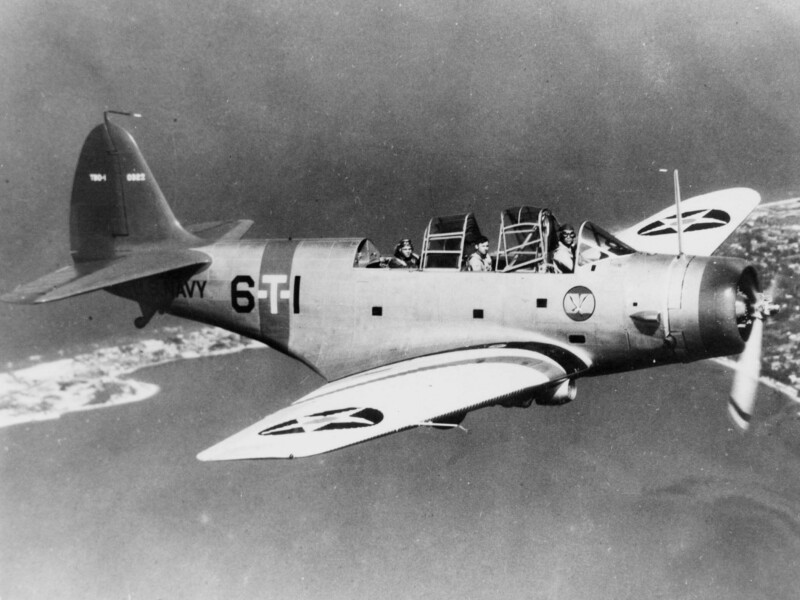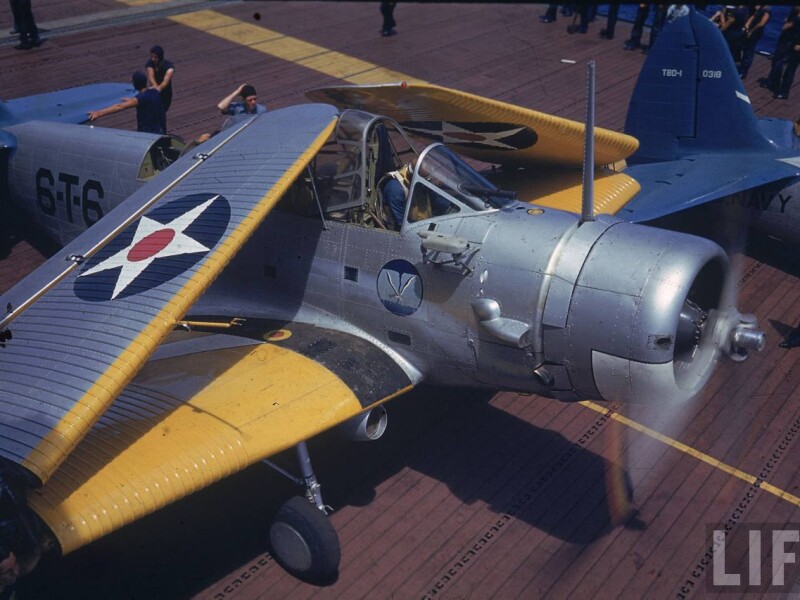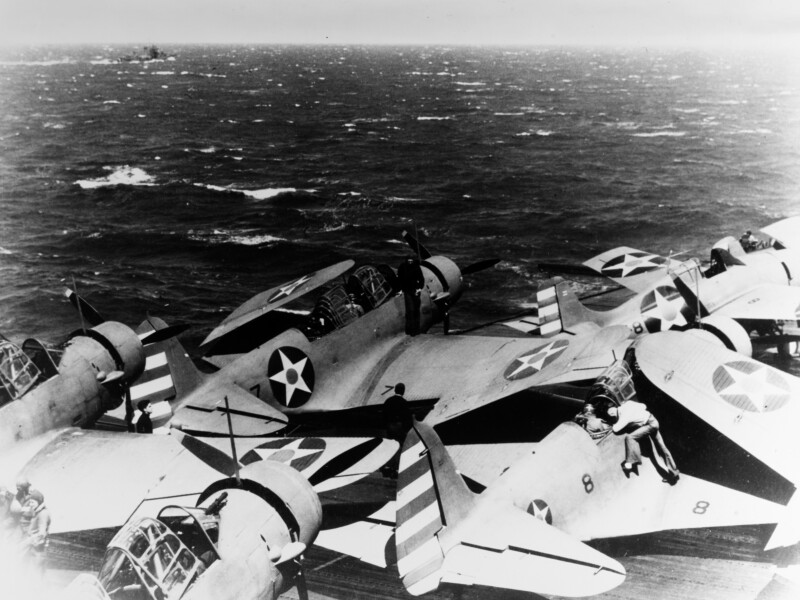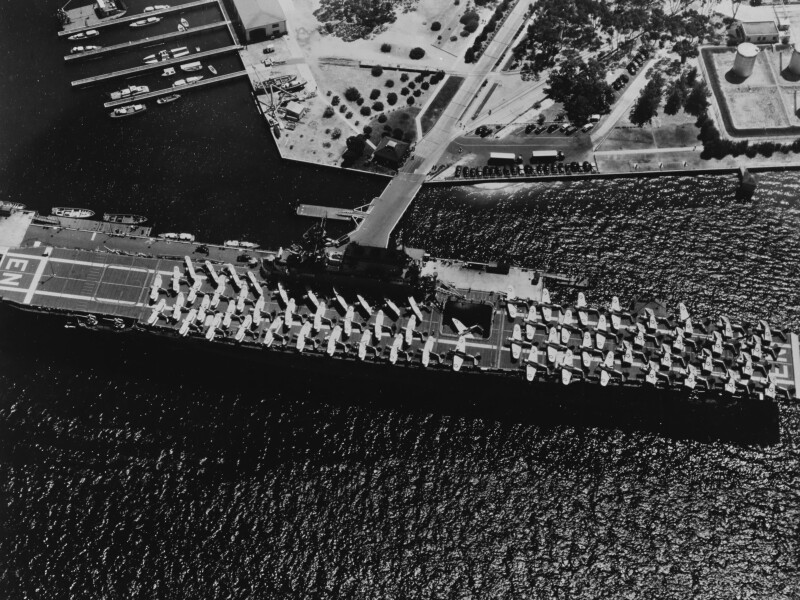-
Library
- Photos
- Documents
-
Geography
- Airfields
- Areas
-
Aviation
- Aircraft
- Engines
-
Weapons
- Guns
- Rockets
- Torpedoes
-
Avionics
- Radio
- Radar
- IFF
- Radar Detectors
- Jammers
- Navigation Devices
-
Unit Database
- Allied Units
- Axis Units
-
Pilot Database
- Pilots
- Victory Claims
- Torpedo Attacks
Douglas TBD Images
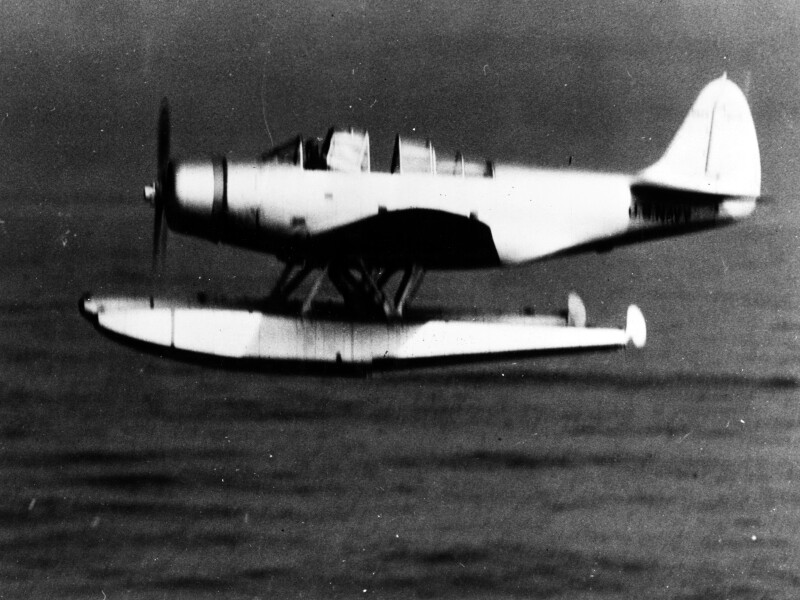
(Bureau # 0268) In low-level flight during torpedo drop tests at the Newport Torpedo Station, Rhode Island, 10 October 1941. Official U.S. Navy Photograph, now in the collections of the National Archives.

Photo #: 80-G-19229 Douglas TBD-1 Devastator torpedo plane Drops a Mark XIII torpedo during exercises in the Pacific, 20 October 1941. This plane is aircraft number 6-T-10, from Torpedo Squadron Six (VT-6), based on USS Enterprise (CV-6). Official U.S. Navy Ph
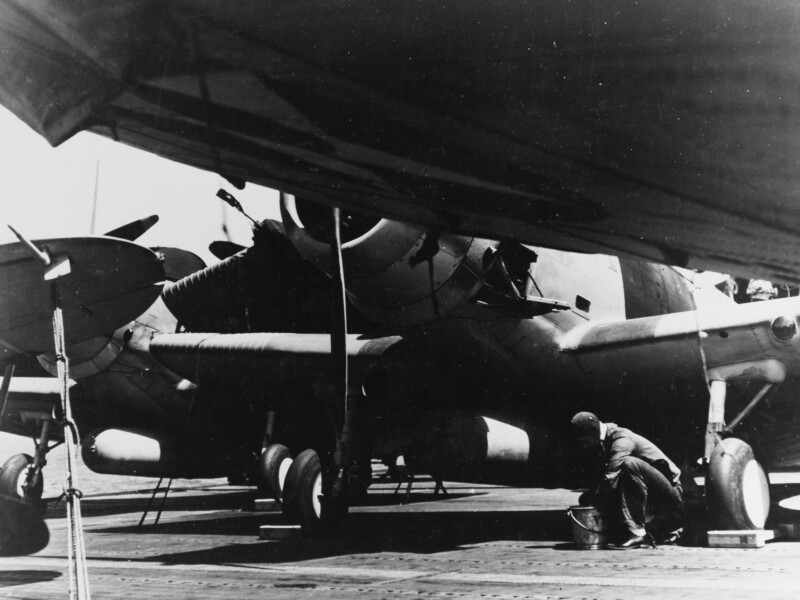
View taken 11 April, 1942, on board USS ENTERPRISE (CV-6), at sea. Note crewman at work apparently washing down a part of the plane. Also note individual aircraft number "5," on undercarriage leg visible behind prop blade, and manner of "Tie-down" at left, in

Photo #: 80-G-17525 Douglas TBD-1 Devastator torpedo plane, of Torpedo Squadron Six (VT-6) Approaches USS Enterprise (CV-6) to land, 4 May 1942. Note Landing Signal Officer at left. Official U.S. Navy Photograph, now in the collections of the National Archives.

Photo #: 80-G-19229 Douglas TBD-1 Devastator torpedo plane Drops a Mark XIII torpedo during exercises in the Pacific, 20 October 1941. This plane is aircraft number 6-T-10, from Torpedo Squadron Six (VT-6), based on USS Enterprise (CV-6). Official U.S. Navy Ph
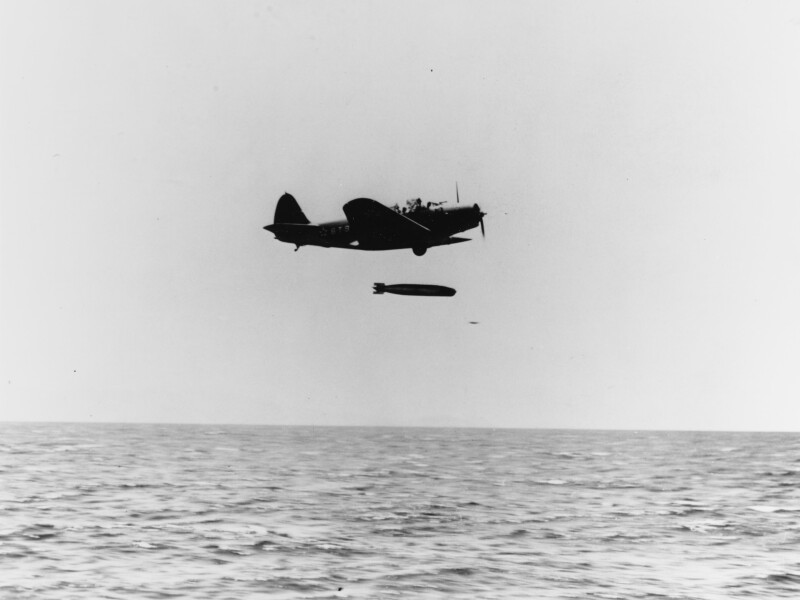
Photo #: 80-G-19230-A Douglas TBD-1 Devastator torpedo plane Drops a Mark XIII torpedo during exercises in the Pacific, 20 October 1941. This plane is aircraft number 6-T-9, from Torpedo Squadron Six (VT-6), based on USS Enterprise (CV-6). Official U.S. Navy P
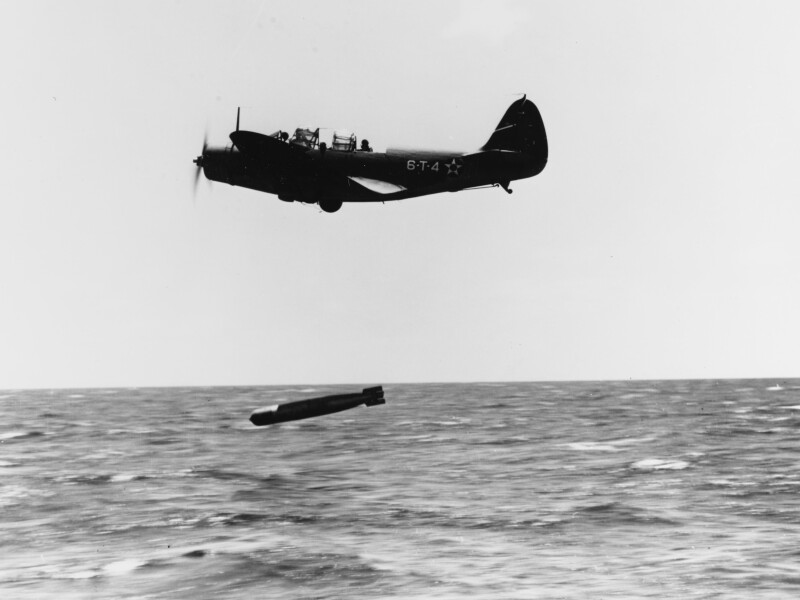
Photo #: 80-G-19230-B Douglas TBD-1 Devastator torpedo plane Drops a Mark XIII torpedo during exercises in the Pacific, 20 October 1941. This plane is aircraft number 6-T-4 of Torpedo Squadron Six (VT-6), based on USS Enterprise (CV-6). All three of the plane's crewmen are visible in its cockpit. Official U.S. Navy Photograph, now in the collections of the National Archives.
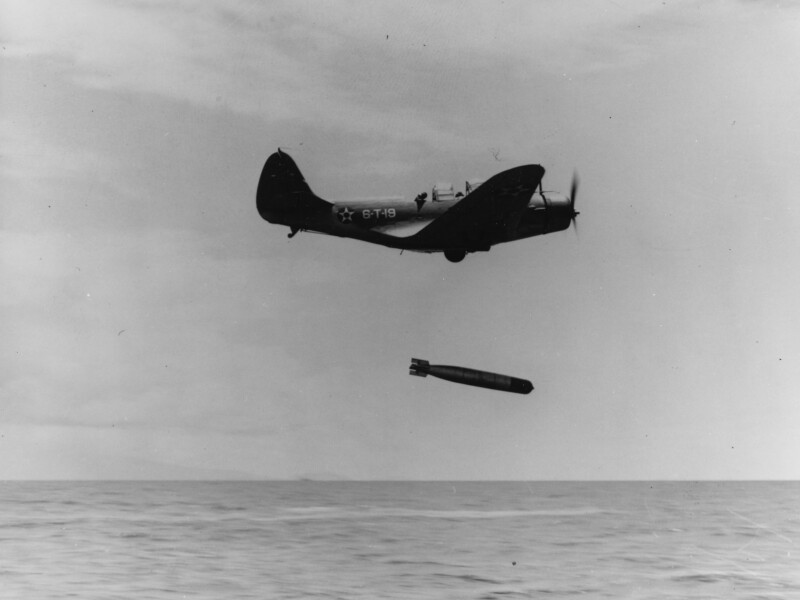
Photo #: 80-G-19231-A Douglas TBD-1 Devastator torpedo plane Drops a Mark XIII torpedo during exercises in the Pacific, 20 October 1941. This plane is aircraft number 6-T-19 of Torpedo Squadron Six (VT-6), based on USS Enterprise (CV-6). Official U.S. Navy Pho

Photo #: 80-G-19231-B Douglas TBD-1 Devastator torpedo plane Drops a Mark XIII torpedo during exercises in the Pacific, 20 October 1941. This plane is from Torpedo Squadron Six (VT-6), based on USS Enterprise (CV-6). Official U.S. Navy Photograph, now in the collections of the National Archives.

Photo #: 80-G-19236-B Douglas TBD-1 Devastator torpedo plane Drops a Mark XIII torpedo during exercises in the Pacific, 20 October 1941. This plane is from Torpedo Squadron Six (VT-6), based on USS Enterprise (CV-6). Official U.S. Navy Photograph, now in the c
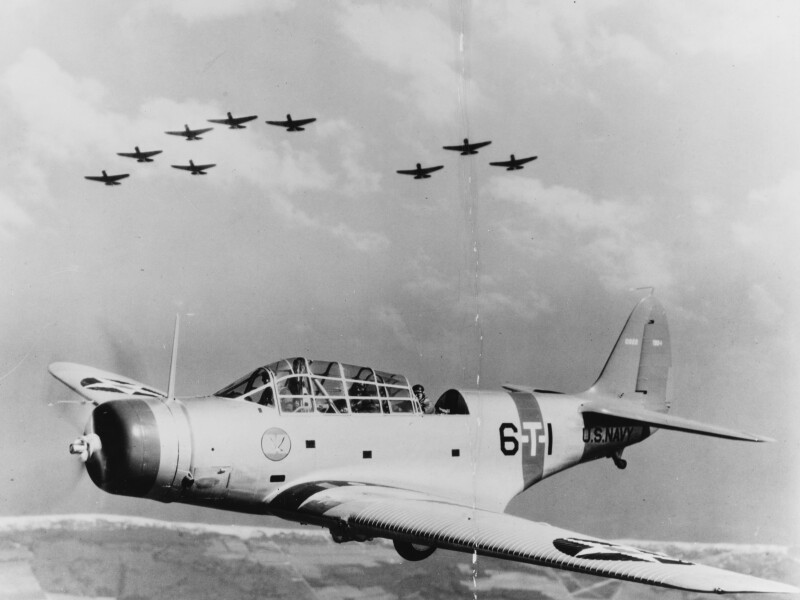
The Torpedo Squadron Six commanding officer's aircraft, from USS Enterprise (CV-6), in flight with a formation of nine other TBD-1s in the background. Photograph was received in 1938. This aircraft, Bureau # 0322, was lost in an accident at sea on about 10 Mar
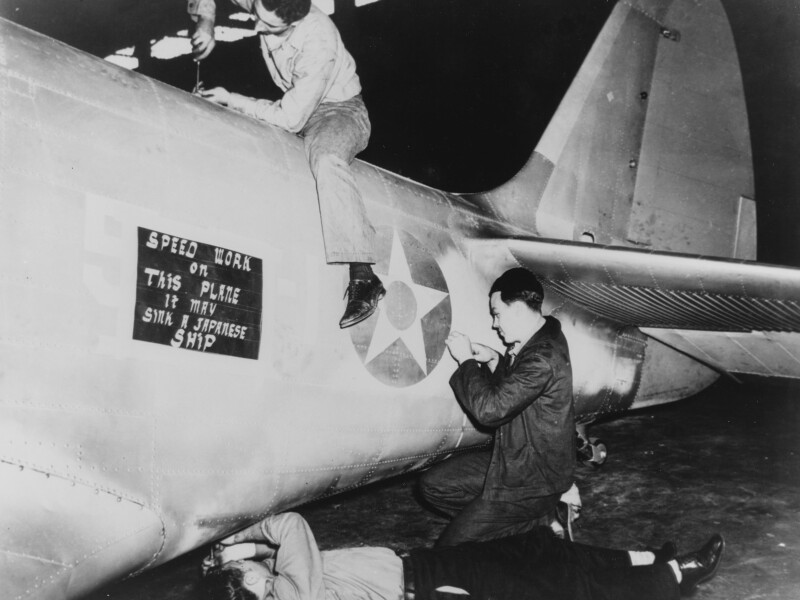
Photo #: 80-PR-3644 Douglas TBD-1 Devastator Torpedo Bomber, of Torpedo Squadron Five (VT-5) Undergoing maintenance at Naval Air Station, Norfolk, Virginia, between the 7 December 1941 Japanese attack on Pearl Harbor and the departure of VT-5's ship, USS Yorkt
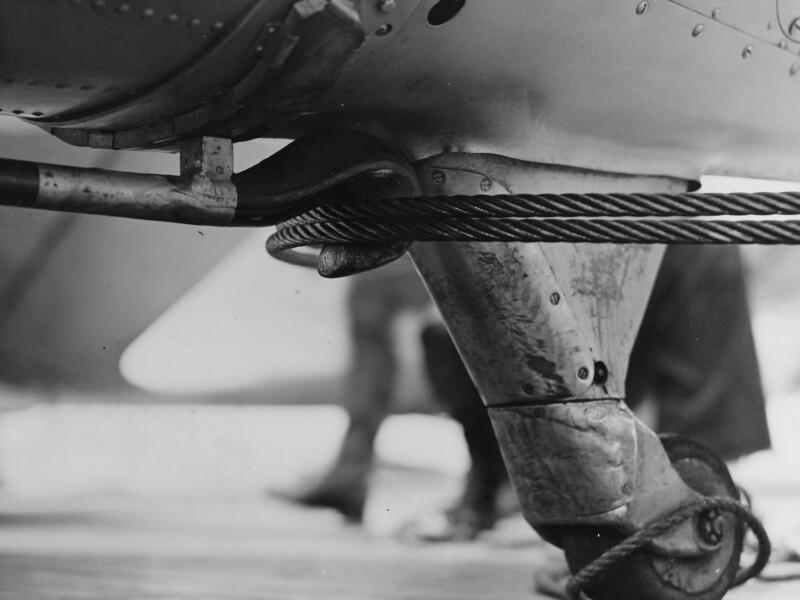
View of two arresting wires caught in the aircraft's tail hook, 18 June 1940, aboard USS SARATOGA (CV-3).
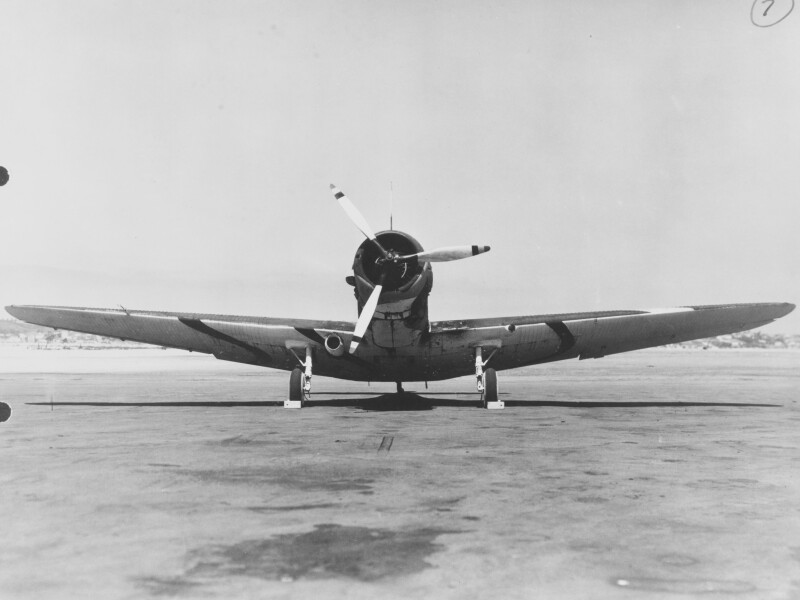
(Bureau # 0320), of Torpedo Squadron Three (VT-3) At Naval Air Station, North Island, California, 22 August 1940. It is painted in McClelland Barclay experimental camouflage design number 7. This aircraft was lost at the Battle of the Coral Sea in May 1942, wh
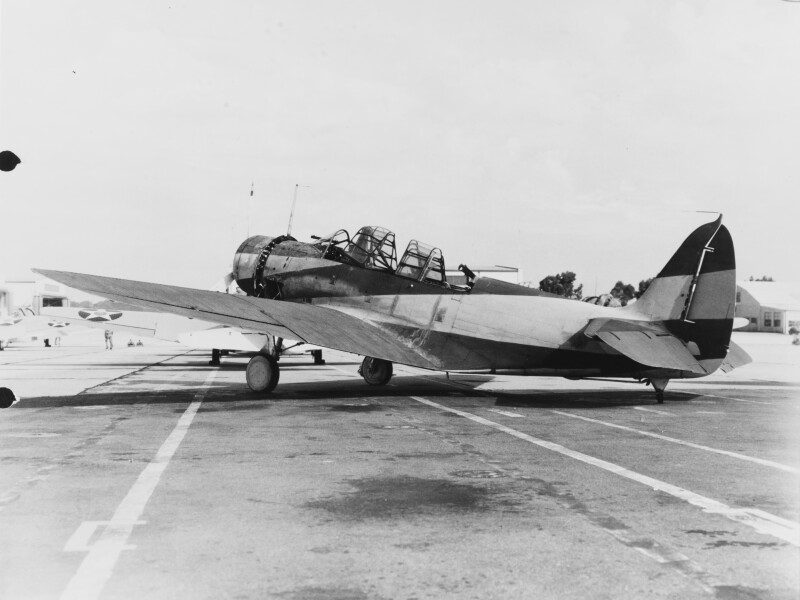
(Bureau # 0339), of Torpedo Squadron Three (VT-3) At Naval Air Station, North Island, California, 22 August 1940. It is painted in McClelland Barclay experimental camouflage design number 8. Note .30 caliber machinegun in the plane's after cockpit. Uncamouflag
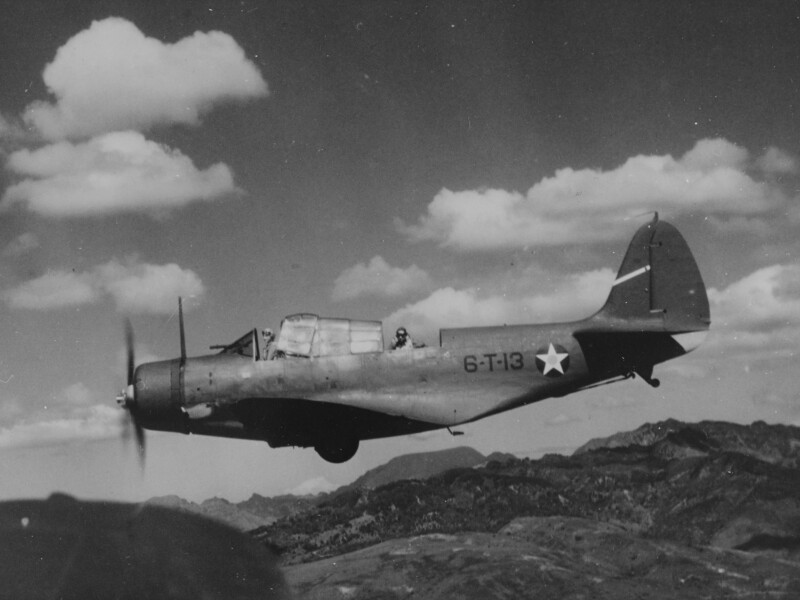
of Torpedo Squadron Six (VT-6) In flight, circa late 1941. Note the black marking 6-T-13 on the plane's fuselage side. Courtesy of Steve Ewing, 1991 U.S. Naval History and Heritage Command Photograph.
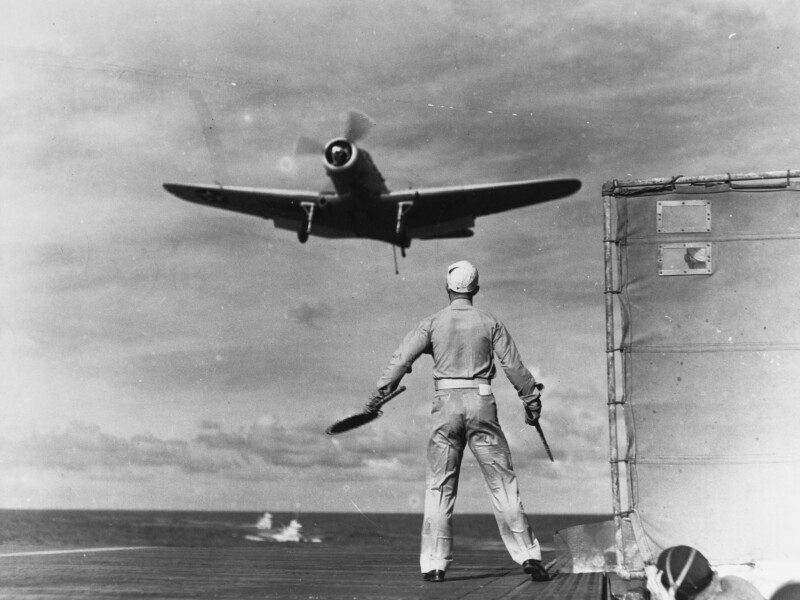
Landing on board USS Enterprise (CV-6), in about July 1941. Note landing signal officer is in the foreground, and plane guard destroyers in the center distance. The original photo caption gives a date of 8 April 1942, which is highly improbable as the plane is in mid-1941 vintage overall gray paint and the destroyers are wearing peacetime light gray paint. Official U.S. Navy Photograph, now in the collections of the National Archives.
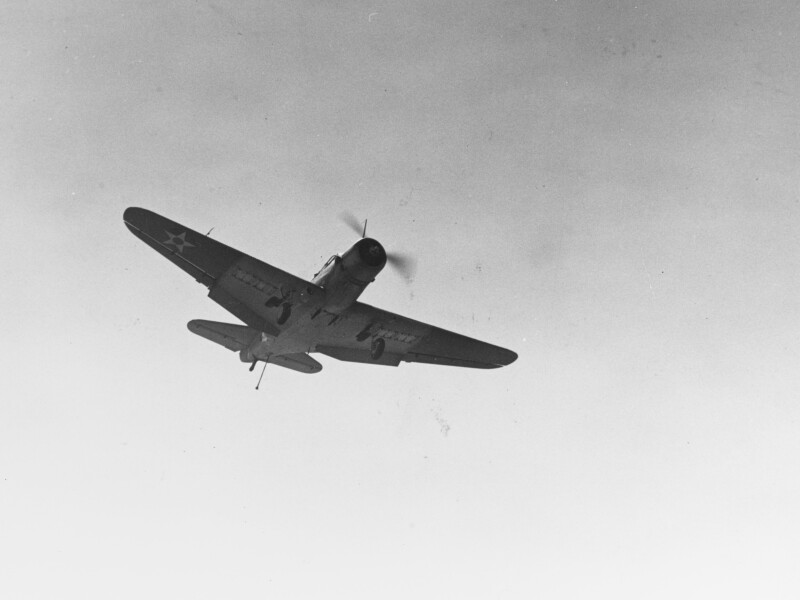
of Torpedo Squadron Six (VT-6) Passes over USS Enterprise (CV-6) during flight operations on 29 July 1941. The plane's arrestor hook and wheels are down, indicating that it is attempting to land. Official U.S. Navy Photograph, now in the collections of the National Archives.
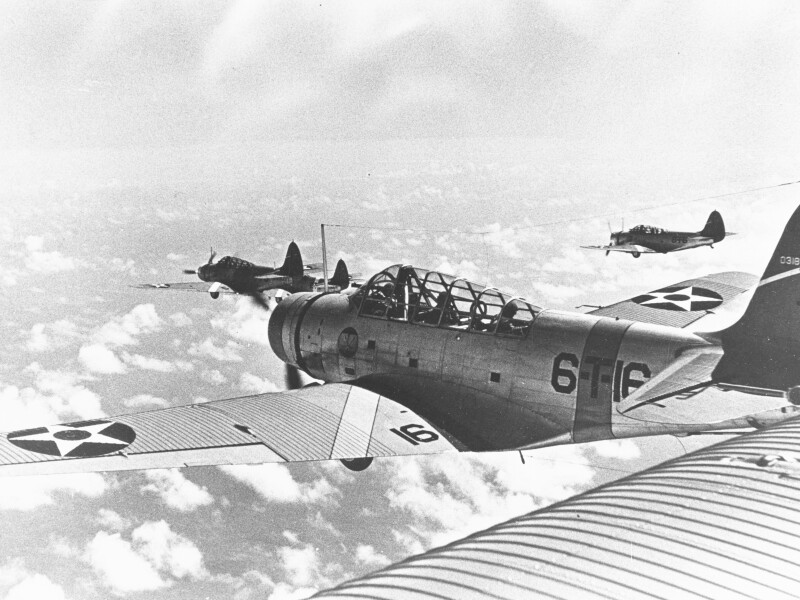
of Torpedo Squadron Six (VT-6), from USS Enterprise (CV-6) In flight, circa 1939. Plane closest to the camera is Bureau # 0318. Note how stripes painted on wings assist pilots in maintaining three-plane V formation. Collection of Vice Admiral George C. Dyer, USN (Retired). U.S. Naval History and Heritage Command Photograph.
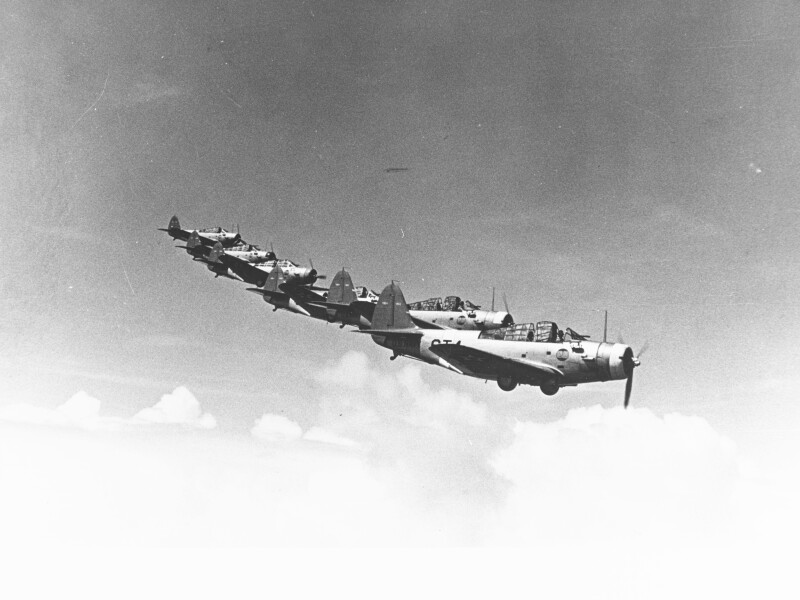
of Torpedo Squadron Six (VT-6), from USS Enterprise (CV-6) Fly in formation, circa 1939. Plane closest to the camera is Bureau # 1511, which was lost while assigned to Torpedo Squadron Three, probably while operating from USS Yorktown (CV-5) during the Battle of Midway. Collection of Vice Admiral George C. Dyer, USN (Retired). U.S. Naval History and Heritage Command Photograph.
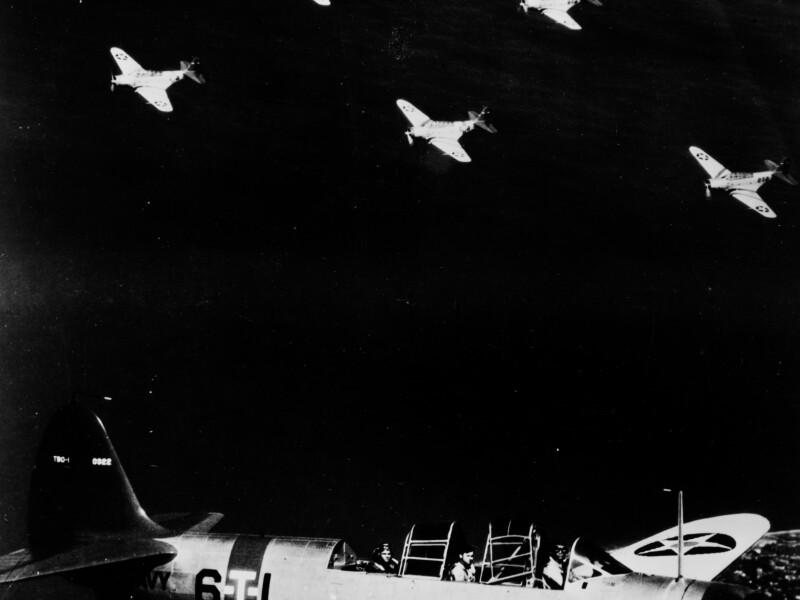
Squadron commander of VT-6 off USS ENTERPRISE (CV-6) in the flight with the squadron overhead circa 1938.
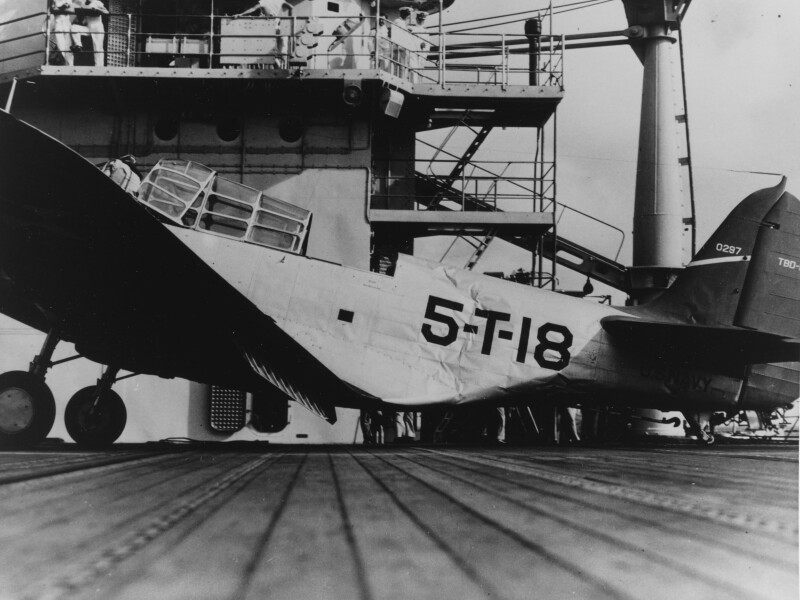
(Bureau # 0297), of Torpedo Squadron Five (VT-5) With a wrinkled fuselage, following a landing accident on USS Yorktown (CV-5), 3 September 1940. The after end of the carrier's island is in the background. This aircraft was ultimately assigned to Torpedo Squadron Eight (VT-8), and was lost in the Battle of Midway on 4 June 1942. Courtesy of Thomas E. Doll. U.S. Naval History and Heritage Command Photograph.
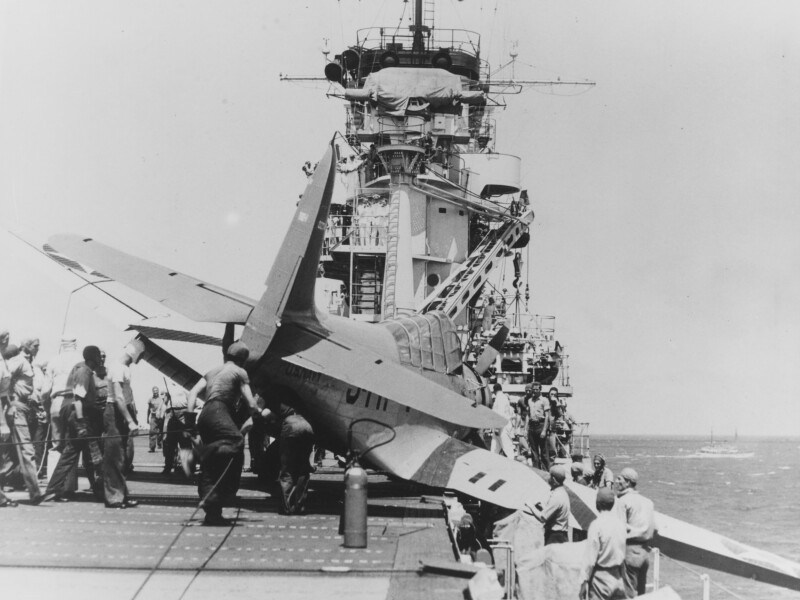
(Bureau # 0284), of Torpedo Squadron Five (VT-5) In the starboard catwalk of USS Yorktown (CV-5), 3 September 1940, following a landing accident. Pilot was Electrician's Mate First Class (Naval Aviation Pilot) C.M. O'Brien. The after end of the carrier's island is in the background. Ultimately assigned to Torpedo Squadron Eight (VT-8), This aircraft was lost on 4 June 1942 during the Battle of Midway. Courtesy of Thomas E. Doll, 1984. U.S. Naval History and Heritage Command Photograph.
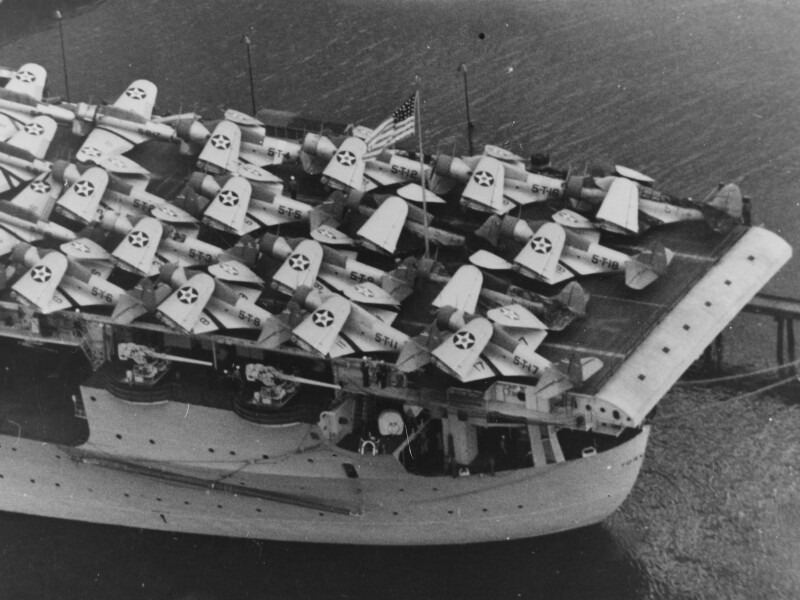
of Torpedo Squadron Five (VT-5) Parked on the after flight deck of USS Yorktown (CV-5) at Naval Air Station, North Island, San Diego, California, in June 1940. Three of these aircraft are painted in an experimental color scheme used during Fleet Problem XXI. This section of the ship was examined when Yorktown's wreck was located in May 1998. The after thirty feet (approximately) of the flight deck was missing, but most other features seen were present, including the ship's name on her stern. This view is cropped from Photo # 80-G-652042. U.S. Naval History and Heritage Command Photograph.

View taken from a TBD-1 from VT-5 showing Japanese ships maneuvering below, off Salamaua, and making smoke. Note pair of TBD-1s carrying two bombs a-piece.

View taken from a VT-5 plane, a Douglas TBD-1 "Devastator" showing two Japanese ships maneuvering off Salamaua. Note pair of TBD-1s at upper left, each carrying a pair of 500-pound bombs. Arrows and numbers indicate Japanese ships underway in Huon Gulf, below.

(Bureau # 0320), of Torpedo Squadron Three (VT-3) At Naval Air Station, North Island, California, 22 August 1940. It is painted in McClelland Barclay experimental camouflage design number 7. This aircraft was lost at the Battle of the Coral Sea in May 1942, while serving with Torpedo Squadron Two on USS Lexington (CV-2). U.S. Naval History and Heritage Command Photograph.
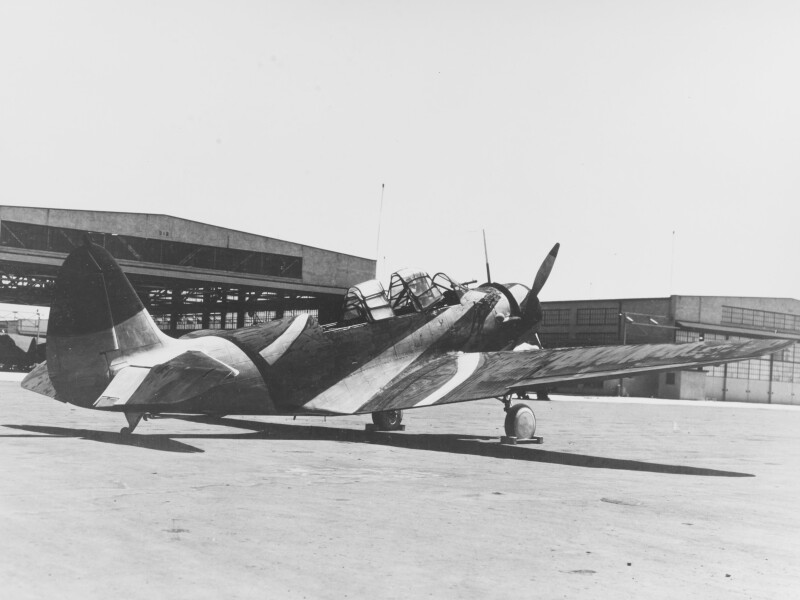
(Bureau # 0320), of Torpedo Squadron Three (VT-3) At Naval Air Station, North Island, California, 22 August 1940. It is painted in McClelland Barclay experimental camouflage design number 7. This aircraft was lost at the Battle of the Coral Sea in May 1942, while serving with Torpedo Squadron Two on USS Lexington (CV-2). U.S. Naval History and Heritage Command Photograph.
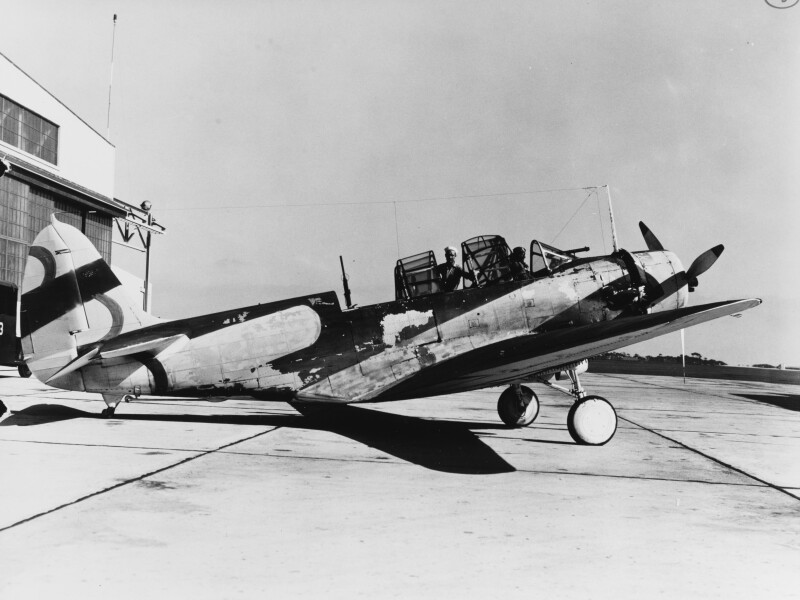
(Bureau # 0339), of Torpedo Squadron Three (VT-3) At Naval Air Station, North Island, California, 22 August 1940. It is painted in McClelland Barclay experimental camouflage design number 8. Note .30 caliber machinegun in the plane's after cockpit. Original side markings, 3-T-? can be faintly seen on the after fuselage through the badly weathered paint job. This aircraft was lost at the Battle of the Coral Sea in May 1942, while serving with Torpedo Squadron Two on USS Lexington (CV-2). U.S. Naval History and Heritage Command Photograph.

(Bureau # 0339), of Torpedo Squadron Three (VT-3) At Naval Air Station, North Island, California, 22 August 1940. It is painted in McClelland Barclay experimental camouflage design number 8. This aircraft was lost at the Battle of the Coral Sea in May 1942, while serving with Torpedo Squadron Two on USS Lexington (CV-2). U.S. Naval History and Heritage Command Photograph.
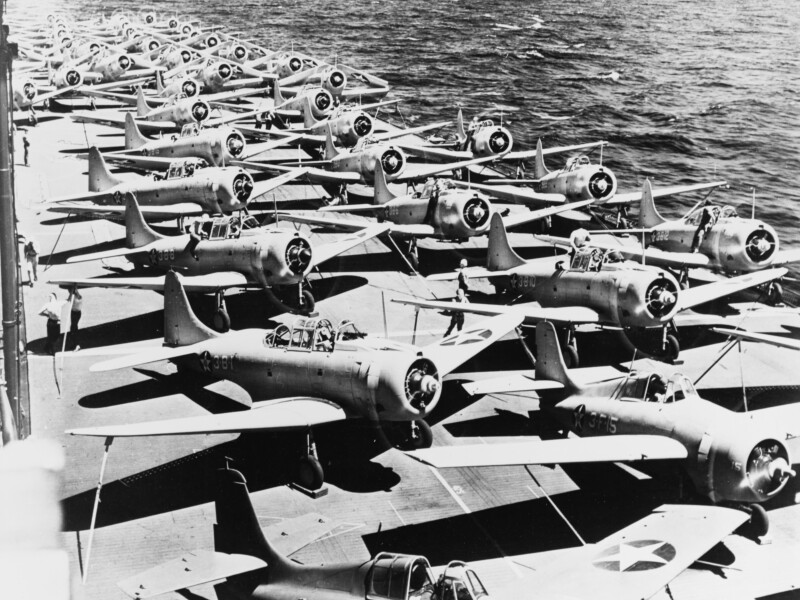
Flight deck scene, circa fall of 1941. Grumman F4F-3 "Wildcats" of VF-3 "Felix the Cat" are in the foreground (one wearing the two toned gray scheme approved in October 1941); Douglas SBD-3 "Dauntless" and Douglas TBD-1 "Devastator" aircraft are parked beyond.
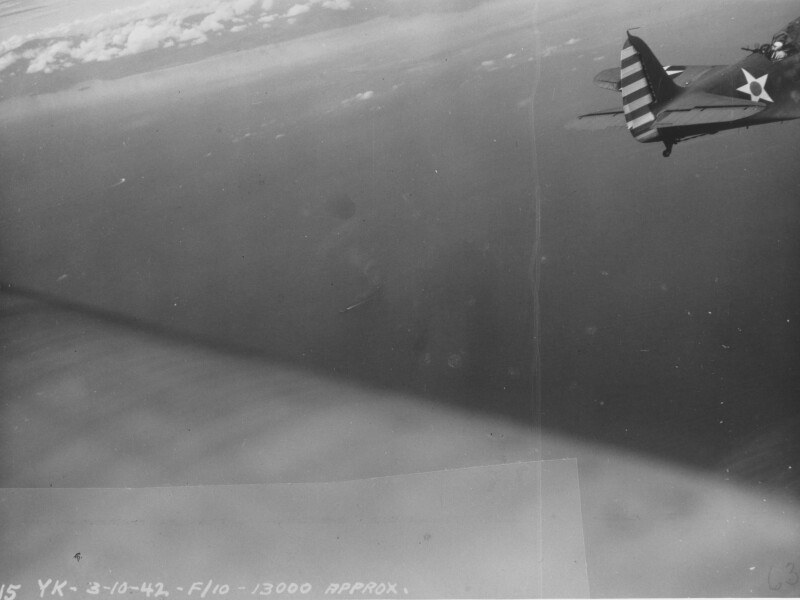
View taken from a VT-5 plane, a Douglas TBD-1 "Devastator" showing ships below maneuvering off Salamaua. Plane at upper right is TBD-1 (BuNo 0319) flown by Lieutenant Joe Taylor, USN Commanding Officer of VT-5. Radioman is ACRM (PA) H. S. Nobbs, USN. Note weathered markings and individual plane No. (1) on fuselage.
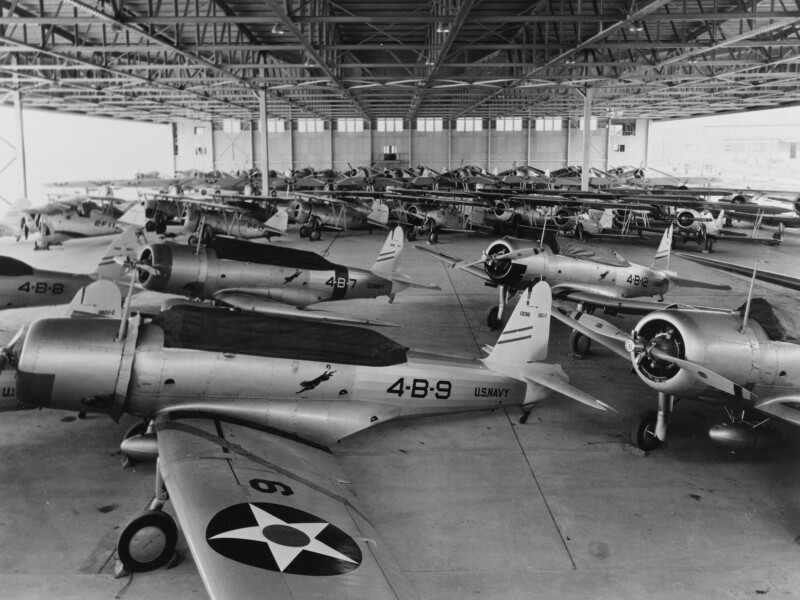
View taken 18 May 1939 showing planes from the USS SARATOGA (CV-3) air group in the hangar at the station--the first carrier group to arrive at the NAS. Planes in the foreground are Vought SB2U-2 "Vindicators" from VB-4; in background are Grumman F2F-1s from VF-2 and Douglas TBD-1 "Devastators" from VT-2. In foreground are SB2U-2s BuNos 1338 (4-B-9), 1336 (4-B-7), 1341 (4-B-12); 1329 (4-B-8); identifiable F2F BuNos are: 9638 (2-F-11), 9653 (2-F-11), 9659 (2-F-18).
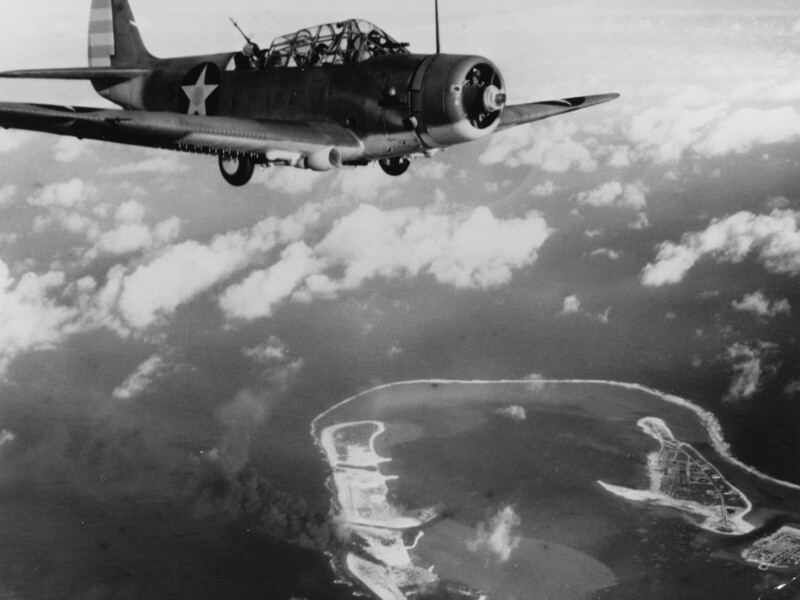
A Douglas TBD-1 torpedo plane from USS Enterprise (CV-6) flies over Wake during the raid. Note fires burning in the lower center. View looks about WNW, with Wilkes Island in the center and the western end of Wake Island in bottom center. Peale Island is at right. Photograph from Department of the Navy collections in the U.S. National Archives.

Torpedo Squadron Six (VT-6) TBD-1 aircraft are prepared for launching on USS Enterprise (CV-6) at about 0730-0740 hrs, 4 June 1942. Eleven of the fourteen TBDs launched from Enterprise are visible. Three more TBDs and ten F4F fighters must still be pushed into position before launching can begin. The TBD in the left front is Number Two (Bureau # 1512), flown by Ensign Severin L. Rombach and Aviation Radioman 2nd Class W.F. Glenn. Along with eight other VT-6 aircraft, this plane and its crew were lost attacking Japanese aircraft carriers somewhat more than two hours later. USS Pensacola (CA-24) is in the right distance and a destroyer is in plane guard position at left. Official U.S. Navy Photograph, now in the collections of the National Archives.

